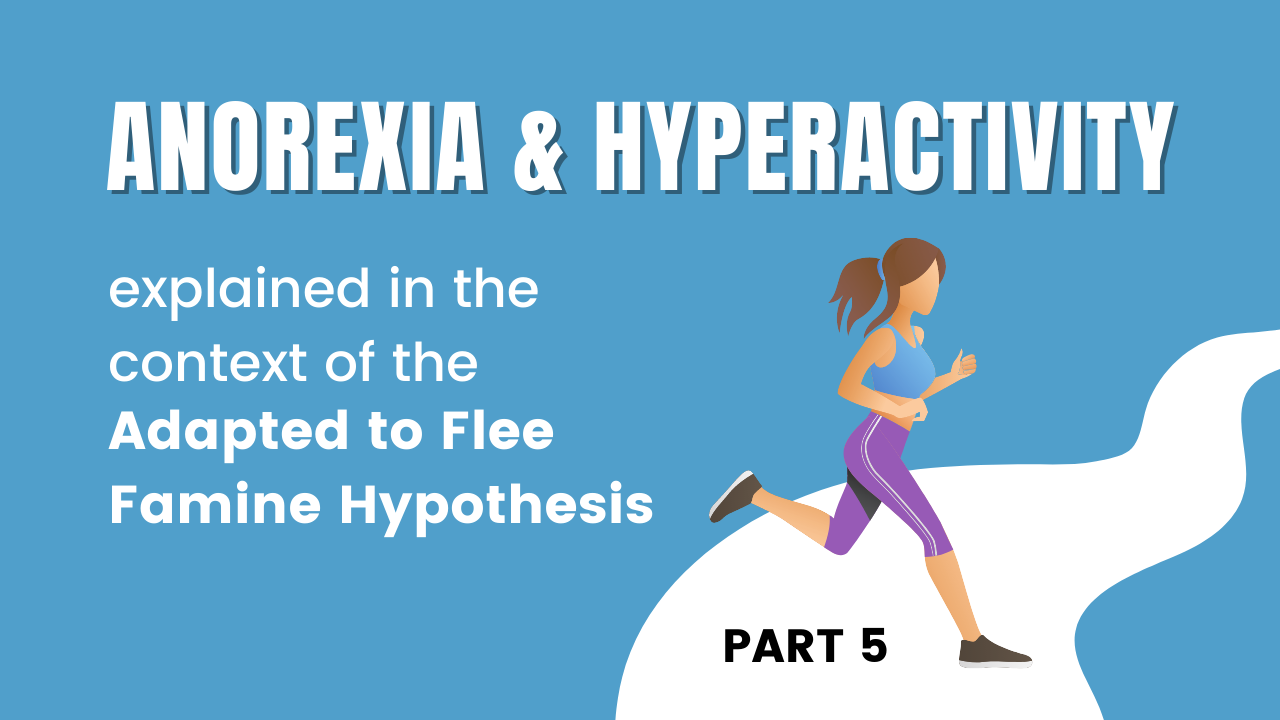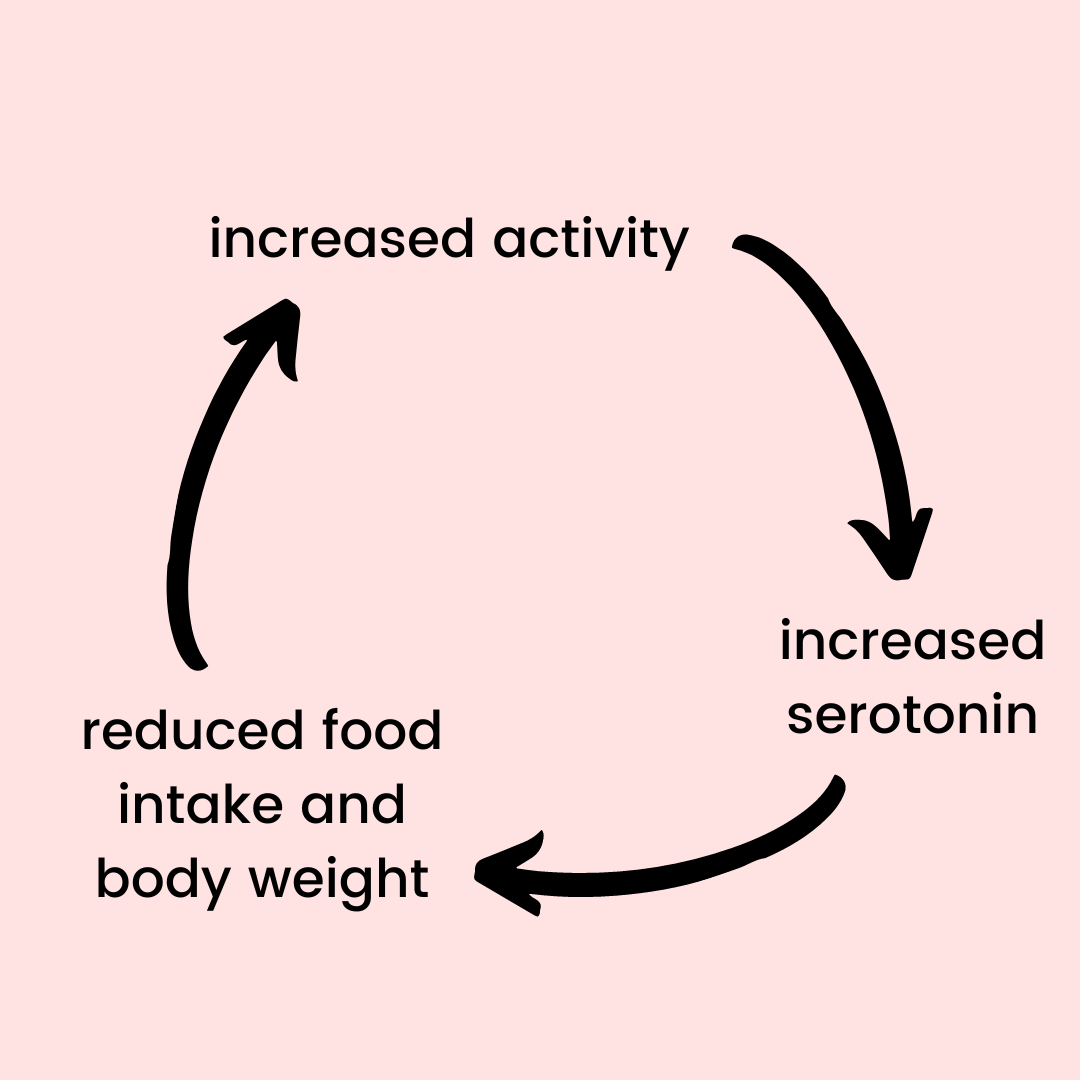Anorexia & Hyperactivity EXPLAINED (Adapted to Flee Famine Hypothesis PART 5)
Apr 04, 2022
Welcome back to my 7-part series explaining the Adapted to Flee Famine Hypothesis! This is part 5 and today we are discussing the second core principle of Anorexia: hyperactivity. Just as we unpacked with restriction in part 4, restless energy and the urge to move is an incredibly paradoxical behavior of Anorexia.
During my own eating disorder, I specifically remember that my running and secret exercise compulsions became worse as I lost more weight, and a lot of my 1:1 coaching clients have said the same!
Although this worsening of symptoms seems illogical considering a sufferer’s fragile state, increased hyperactivity is actually VERY logical when looked at through the lens of the Adapted to Flee Famine Hypothesis. Let’s dive into just why that is!
Migratory Restlessness
The hyperactivity component of Anorexia is believed to be a form of “migratory restlessness”, a scientific phenomenon that seasonally occurs in birds. In the context of an adaptation to flee famine, the increased urge to move makes a lot of sense. It prompts migration and thus, increases the likelihood of arrival in the abundant lands!

Hyperactivity in Animal Studies
Perhaps, one of the most fascinating observations when it comes to animal models of Anorexia, is that laboratory rats will die of self-starvation when given restricted access to food along with a running wheel.
In normal circumstances, lab rats run less than 1 km/day and are given ad lib (unlimited) access to food. When the rat’s mealtime is restricted to 1 hour a day and are given the option to run in a wheel however, they will run up to 20 km per day! These emaciated rats can maintain this extraordinary activity for up to 90 days, and as their weight decreases, their hyperactivity increases in a linear fashion.

Hormones & hyperactivity
The neuroendocrine mechanisms for hyperactivity probably include corticotrophin releasing hormone (which stimulates the production of corticosterone, involved in stress responses as mentioned in the previous post) and serotonin. Both hormones are elevated in anorexia, and likely stay elevated to the feedback signals in the brain.
To elaborate, activity induced serotonergic stimulation leads to reduced food intake and body weight, which might be a further stimulus for hyperactivity. In scientific terms, this type of feedback loop is called positive feedback. However, anyone with Anorexia knows that it’s of course a viciously negative cycle!

Breaking the hyperactivity cycle
Related rat studies beautifully illustrate the solution for breaking this negative cycle of exercise addiction, and that is to eat an abundance of food and to prove to your body that food isn’t restricted.
Rats do not lose weight and become anorexic if given an exercise wheel and ad lib feeding. Further, if restricted to one mealtime but given no wheel, they eat enough during the hour to maintain their weight.
Lastly, if normal weight rats, housed with a wheel, are given four 15-min opportunities to feed instead of a single 1-hr bout, they also do not become hyperactive, and already anorexic rats reduce activity on this regime.
It’s almost as if the the increase in opportunities to eat is registered as a sign that resources are plentiful. Again, beautifully illustrates why it’s SO important to eat consistently throughout the day in recovery!
And that’s a wrap for part 5 in my Adapted to Flee Famine series, explaining the biological reason for hyperactivity in Anorexia! If you made it to the end of this post, please consider sharing it with whoever you think can learn from it. Of course, if you want to dive even deeper and receive 1-1 individualized guidance to breaking your exercise addiction and fully recovering from Anorexia, be sure to schedule a consultation call here! In the next post, I’ll be explaining the third core symptom of Anorexia.
FULL TEXT: Adapted to Flee Famine Hypothesis




